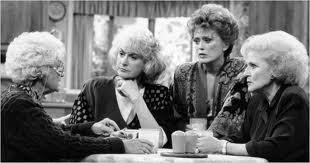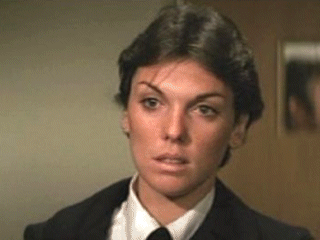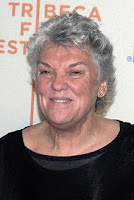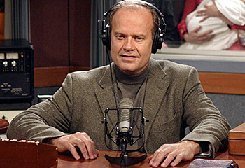
The capybara has a heavy, barrel-shaped body and short head, with reddish-brown fur on the upper part of its body that turns yellowish-brown underneath. Its sweat glands can be found in the surface of the hairy portions of its skin, an unusual trait among rodents. The animal lacks down hair, and its guard hair differs little from over hair.
Adult capybaras grow to 3.48 to 4.40 ft. in length, stand 20 to 24 inches tall at the withers, and typically weigh 77 to 146 lbs., with an average in the Venezuelan llanos of 108 lbs. Females are slightly heavier than males. The top recorded weights are 201 lbs. for a wild female from Brazil and 162 lbs, for a wild male from Uruguay.
Their hind legs are slightly longer than their forelegs; they have three toes on their rear feet and four toes on their front feet. Their muzzles are blunt, with nostrils, and the eyes and ears are near the top of their heads.
Capybaras are herbivores, grazing mainly on grasses and aquatic plants, as well as fruit and tree bark. They are very selective feeders and feed on the leaves of one species and disregard other species surrounding it. They eat a greater variety of plants during the dry season, as fewer plants are available. While they eat grass during the wet season, they have to switch to more abundant reeds during the dry season. Plants that capybaras eat during the summer lose their nutritional value in the winter, so they are not consumed at that time. The capybara's jaw hinge is not perpendicular, so they chew food by grinding back-and-forth rather than side-to-side. Capybaras are autocoprophagous, meaning they eat their own feces as a source of bacterial gut flora, to help digest the cellulose in the grass that forms their normal diet, and to extract the maximum protein and vitamins from their food. They also regurgitate food to masticate again, similar to cud-chewing by cattle. As is the case with other rodents, the front teeth of capybaras grow continually to compensate for the constant wear from eating grasses; their cheek teeth also grow continuously.
When in estrus, the female's scent changes subtly and nearby males begin pursuit. In addition, a female alerts males she is in estrus by whistling through her nose. During mating, the female has the advantage and mating choice. Capybaras mate only in water, and if a female does not want to mate with a certain male, she either submerges or leaves the water. Dominant males are highly protective of the females, but they usually cannot prevent some of the subordinates from copulating. The larger the group, the harder it is for the male to watch all the females. Dominant males secure significantly more matings than each subordinate, but subordinate males, as a class, are responsible for more matings than each dominant male. The lifespan of the capybara's sperm is longer than that of other rodents.
There's no reason to buy ready-made , when a home style go-along like our tasty country Corn Casserole is so easy to make. This hearty veggie bakes and takes almost no time thanks to a few shortcuts from the freezer aisle!
- 1 (12-ounce) package frozen corn kernels, thawed
- 2 eggs, beaten
- 1 cup milk
- 2 tablespoons all-purpose flour
- 1 teaspoon vanilla extract
- 1 teaspoon sugar
- 1/2 teaspoon salt
- 1/4 teaspoon black pepper
- 1 tablespoon butter, melted
- 1/4 cup coarsely broken butter crackers
- Preheat oven to 350 º. In a large bowl, combine corn, eggs, milk, flour, vanilla, sugar, salt, and pepper. Pour into a 1-1/2-quart ungreased casserole dish.
- Combine butter and cracker crumbs and sprinkle evenly over top of the casserole.
- Bake for 45 to 50 minutes, until set.
***We used Ritz® crackers to make this corn casserole, but any butter-type crackers or saltine crackers will work.


1955 – Kelsey Grammar, American actor
On the third Monday in February, the United States celebrates the federal holiday known as Presidents Day. The day takes place during the birth month of the country’s two most prominent presidents, George Washington and Abraham Lincoln. While the day once only honored President George Washington on his birthday, February 22nd, the day now never lands on a single president’s birthday.
Across the country, most Americans know the day as Presidents Day. More and more of the population celebrates the day to honor all of the past United States Presidents who have served the country. Throughout the country, organizations and communities celebrate the day with public ceremonies.
HOW TO OBSERVE
- Some businesses close for the day, including banks and federal buildings, so make a note.
- Celebrate your favorite U.S. president.
- Watch a documentary about the POTUS. For example, The Presidents by the History Channel.
- See if you can name all the presidents in order.
- Challenge yourself to some presidential trivia:
- Who are the three presidents who served in 1841?
- Forty years later, this same phenomenon occurred again in 1881. Name the three presidents who served that year.
- Name the three presidents who died on July 4th.
- Who were the four presidents who were assassinated while in office
PRESIDENTS DAY HISTORY
The origin of Presidents Day lay in the 1880s when the birthday of George Washington was celebrated as a federal holiday. In 1968, Congress passed the Uniform Monday Holiday Bill. The bill moved several federal holidays to Mondays creating three-day weekends. During the debate on the bill, one proposal suggested George Washington’s birthday be renamed Presidents Day to honor the birthdays of both George Washington and Abraham Lincoln. Washington’s birthday is February 22nd and Lincoln’s birthday is February 12th. Although Abraham Lincoln’s birthday was celebrated in many states, it was never an official federal holiday. Following much discussion, Congress rejected the name change.
Despite the rejection, soon after the bill went into effect in 1971, and the observance of Washington’s birthday shifted to the third Monday in February, gradually Presidents Day became the commonly accepted name. Over time, the observance came to be known to many as a day to honor both Washington and Lincoln. However, today another shift has occurred and many see the day as a celebration of all the U.S. Presidents.
Answers
- Martin Van Buren, William Henry Harrison, John Tyler
- Rutherford B. Hayes, James A. Garfield, and Chester A. Arthur.
- John Adams, James Monroe, Thomas Jefferson.
- Abraham Lincoln, James A. Garfield, William McKinley, John F. Kennedy











No comments:
Post a Comment